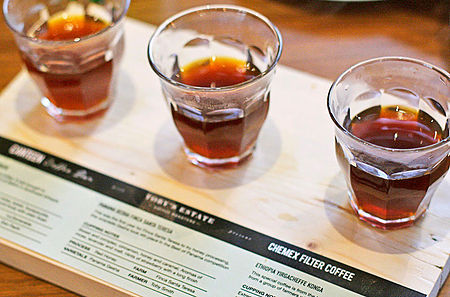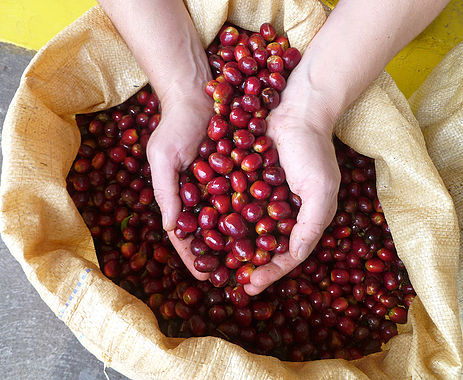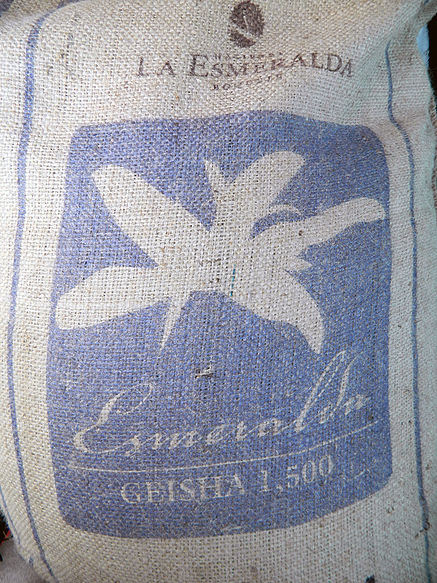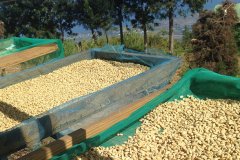The trend of Rosa coffee and the advantage of Panamanian coffee stem from the special geography, humanities and agricultural management.

Professional barista communication, please pay attention to coffee workshop (Weixin Official Accounts cafe_style)
In fact Panama produces relatively little coffee and is not a major producer of commercial beans in Central and South America. However, due to several special factors, it has successfully propagated and promoted the most popular coffee in the world. This is the main reason why we introduced Panama after Ethiopia.
Coffee was first introduced to Panama in 1780, when Europeans brought in the first Typica species. After that, the local people began to cultivate widely. Panama coffee is smooth, full and light, with perfect acidity and balance, and its premium coffee beans are pure and distinctive. But Panamanian coffee was unknown in its early years and was even involved in a coffee scam disguised as Kona in Hawaii in the 1990s.
However, due to its location between the North and South American continents, it has a narrow east-west terrain and is subject to both Pacific and Atlantic winds. The superior volcanic landscape creates an environment that is extremely suitable for coffee growth. Second, many Panamanian farm owners are wealthy families who immigrated from the United States to enjoy rural life. Panama's farms enjoy the dual advantages of innate natural ecology and acquired management resources. It is suitable for the development of fine agriculture.
Panama's Coffee Association (SCAP) played a key role in distinguishing Panama from the large coffee exporters of Central and South America. In 1996, at a time when coffee prices were low internationally and coffee trees were suffering from pests and diseases, Ricardo and Wilford of Kotowa Manor, Francisco of Don Pachi Manor, Daniel and Rachel of Esmeralda Manor, brothers and sisters, coffee growers from Poquet and Volcano regions, launched the Panama Coffee Association to share and learn about planting and treatment techniques and to hold BOP competitions.
The summer rose variety originated in 1931 from the summer rose forest in southwestern Ethiopia and has been introduced to Kenya, Uganda, Tanzania and Costa Rica in Central and South America. Pachi Serracin, the owner of Don Patch Manor in Panama, was the first to bring Rosedale from Costa Rica to Panama for cultivation in 1963. But rosewood was not popular in Panama at first, its yield was low, its economic efficiency was poor, and it was only mixed with other coffee beans and sold. Some rosewood trees could be found in other estates, and some even served as windbreaks in coffee plantations. Until 2000, Jade Manor's little Peterson, in a scientific way, found that the flavor of rose summer is very attractive, and then won the BOP Best Panama Coffee Competition in 2003. In the following ten years, rose summer won all the green bean competitions, and countries began to grow rose summer. Special geographical, cultural, agricultural management and the industry both competition and cooperation between the partnership, successfully created the Rose Summer coffee trend and Panama coffee advantages.

BOQUETE is located in Chiriqui province on the border with Costa Rica. It is the famous origin of Panama's summer coffee and is famous for producing high-quality Arabica coffee. Chiriki Heights consists of two main areas: Boquete and Volcan-Candela. The most common Panamanian coffee plantations are Boquete, which produces the most quality coffee in Panama. Volcan, which produces coffee characterized by a mild and balanced taste, has gradually gained the attention of international connoisseurs and coffee lovers, and is believed to soon be on par with Borquez. Fertile coffee plantations in Santa Clara are watered by clear water from Chorera Falls, and the nearby Panama Canal allows fresh, pure Panamanian coffee to be easily exported to all parts of the world.
The cold and stable climate at high altitudes in Panama is more conducive to the growth of coffee beans than coffee beans grown at low and middle altitudes. The coffee beans grown here grow slowly, have the strongest and special flavor, and the hardness of the coffee is also the hardest. Coffee beans from high altitude areas have the most complete taste, higher alcohol and diversified flavors, such as chocolate, caramel, flower and so on. Warm in the mouth, moderately sour and bitter. Panamanian high-growth beans are among the most outstanding. Famous coffee estates include Hacienda La Esmeralda Estate, Kotowa Estate, Finca Lerida Estate, Finca Elida Estate, and Berlina Estate.

Important Notice :
前街咖啡 FrontStreet Coffee has moved to new addredd:
FrontStreet Coffee Address: 315,Donghua East Road,GuangZhou
Tel:020 38364473
- Prev

Introduction of famous coffee producing areas, processing plants and producers' cooperatives in Ethiopia
For professional baristas, please follow the coffee workshop (Wechat official account cafe_style) Ethiopia is the birthplace of Arabica coffee and has the most diverse variety on earth. The main producing areas are Sidama, Yirgacheffe, Kochere, Harar, and Djimmah (there are many English place names in Ethiopia.
- Next

Ethiopian Yegakochel Red Cherry Project Reko washed Coffee Flavor Information
Professional baristas please follow the Coffee Workshop (Wechat official account cafe_style) Red Cherry Project was launched in 2007, simply to encourage coffee farmers to produce the best quality coffee, and so that their efforts can be rewarded, the lowest qualified cup test score is 88. For bakers, the red cherry project makes it easy for them to buy high-quality raw beans.
Related
- Detailed explanation of Jadeite planting Land in Panamanian Jadeite Manor introduction to the grading system of Jadeite competitive bidding, Red bid, Green bid and Rose Summer
- Story of Coffee planting in Brenka region of Costa Rica Stonehenge Manor anaerobic heavy honey treatment of flavor mouth
- What's on the barrel of Blue Mountain Coffee beans?
- Can American coffee also pull flowers? How to use hot American style to pull out a good-looking pattern?
- Can you make a cold extract with coffee beans? What is the right proportion for cold-extracted coffee formula?
- Indonesian PWN Gold Mandrine Coffee Origin Features Flavor How to Chong? Mandolin coffee is American.
- A brief introduction to the flavor characteristics of Brazilian yellow bourbon coffee beans
- What is the effect of different water quality on the flavor of cold-extracted coffee? What kind of water is best for brewing coffee?
- Why do you think of Rose Summer whenever you mention Panamanian coffee?
- Introduction to the characteristics of authentic blue mountain coffee bean producing areas? What is the CIB Coffee Authority in Jamaica?

